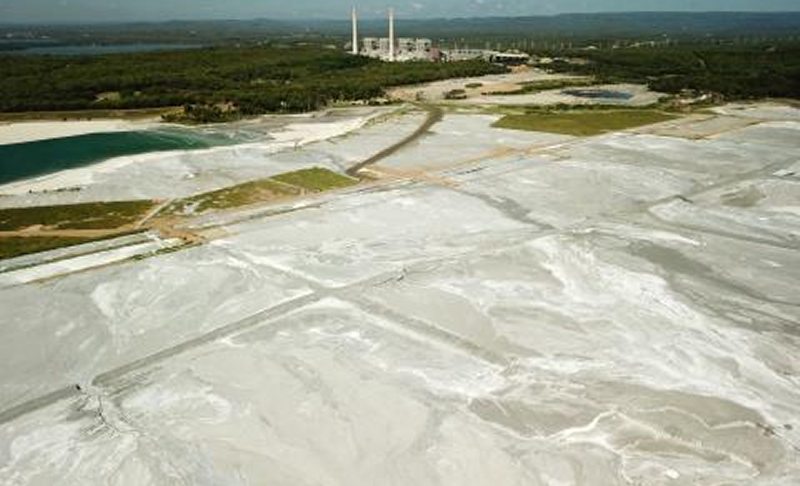
Just some of the huge stockpile of coal ash | Image: HCEC
Accumulation of coal ash and water discharge from New South Wales’ Eraring and Vales Point power stations is creating a toxic aquatic environment in Lake Macquarie states a new report.
The Hunter Community Environment Centre (HCEC) says its water sampling indicates both power stations have been discharging aluminium, iron, and manganese above the recommended concentrations for marine waters used for recreation, along with arsenic, lead, copper, nickel, and zinc above the Australian and New Zealand Environment and Conservation Council (ANZECC) Guidelines.
Added to this, sediment in the creek receiving the Eraring coal ash dam overflow was found to have a selenium concentration of 110 parts per million, more than 55 times the level recommended in order to protect sensitive fish and birds. There are also concerns over cadmium levels in crabs.
People who regularly consume fish, crabs and other seafood sourced from the Lake are also at risk from the contamination as heavy metals are bioaccumulative.
“The discharge of these heavy metals into Lake Macquarie really can’t be reduced without removing the coal-ash from the shores of the lake,” said HCEC Coordinator, Jo Lynch.
Ash from Vales Point and Eraring power stations is disposed of in two huge dams constructed over wetlands on the shores of Lake Macquarie. And there’s a lot of it.
1.9 Million Tonnes Of Coal Ash Added Each Year
Between the two power stations’ ash dams, around 60 million tonnes of coal ash is being held says HCEC, and a further 1.9 million tonnes is created each year. Around 90% of it is fly ash, which is captured by power station smoke stack filters.
This ash does have some uses – and one of its low risk applications is to replace cement in concrete mix. But reuse of the ash has been sitting at around just 20 per cent for quite some time. In Japan, 97% of it is reused.
While fly ash should be classed as hazardous waste, it has been excluded from this classification under the Commonwealth Controlled Waste National Environmental Protection Measure so it can be reused.
So why is it being allowed to pile up so much? HCEC says barriers to reuse are part regulatory and part commercial. One issue is the vertically integrated nature of the cement industry in Australia.
“Concrete companies only use as much fly ash as their fully-owned cement producers want them to,” states the report.
The Hunter Community Environment Centre report offers 21 recommendations for resolving the situation. The full report can be downloaded here or the report brief here.
An ounce of prevention being worth a pound of cure, the best way to avoid coal ash problems is to stop producing it in the first place. Vales Point is a coal-fired clunker that was to close in the early 2030s, but back in 2017 there was talk of extending its life.
While it’s great Vales Point operator Delta Electricity is to build a large-scale solar power facility on an old ash dam at the site, it could be considered a “look over here” or sweep-under-the-rug action given the state of Lake Macquarie. Groundwater below the ash dams has elevated concentrations of arsenic, lead, chromium, and copper, nickel, and zinc.
Some In The Coalashion Still Not Getting It
Given all the evidence piling up about just how bad coal power is for human health and that of just about everything else, it’s mind-boggling that some politicians are still so eager so see more of the damn plants built. Yesterday, Barnaby Joyce told The Australian that Prime Minister Scott Morrison should promise a new coal-fired power station would be constructed if the Coalition retained power after the next Federal Election.
Craig Kelly is of course another big supporter of new coal power, as is Tony Abbott. However, while they aren’t alone there appears to be awareness growing among some Liberals (but perhaps not so much among the Nationals) that continuing and deepening the love affair with coal could result in big trouble come election day.
The upcoming generation will also judge clinging to coal harshly; even sooner than the election. This Friday thousands of school students across the nation are expected to again protest lack of action on climate change and renewable energy. The PM’s views of a previous similar action was that there should be more learning and less activism in schools.

 RSS - Posts
RSS - Posts



Speak Your Mind